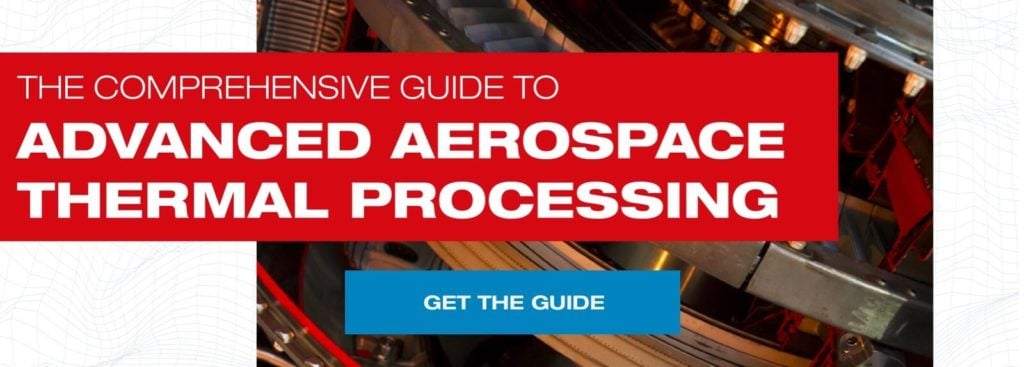Stainless steels are revered across industrial applications for the unique qualities they possess, from corrosion resistance to toughness to the value they add to their application. What makes them “stainless?” It’s the minimum 10.5% chromium as part of their formulas.
But heat treating stainless steel can be tricky. Thermal processes improve some qualities at the expense of others. Heat treaters are tasked with developing the right balance. Balance is achieved when heat treating and annealing stainless steel parts is precisely matched to their makeup and intended use.
Types of stainless steel
The most common stainless steels are divided into four main classes:
Austenitic stainless steels cannot harden via heat treatment. Instead, these steels work harden (they attain hardness during their manufacture and formation). Annealing these stainless steels softens them, adds ductility and imparts improved corrosion resistance. 300-series stainless steels are the most popular examples of this type. The most popular of the 300-series steels—304 stainless steel— is revered for its very good corrosion resistance and is commonly used in cookware.
Martensitic stainless steels can be hardened via heat treatment; how hard they can get depends on their carbon content. The more carbon these steels contain, the more hardenable they are. For example, hose clamp screws are typically made of 410 stainless steel.
Surgical instruments, food processing parts and mold components are typically made from 420 stainless steel. 440C stainless steel (the “C” denotes a higher carbon content) is well-suited for tool and die applications in the food processing industry due to its higher hardness.
Ferritic stainless steels cannot be hardened by heat treatment. However, they display maximum ductility, impact toughness and corrosion resistance; they’re also cheap and are very resistant to scaling at high temperatures (such as in exhaust systems). For example, the 405 and 409 stainless steel types are commonly used in the manufacture of mufflers and other automotive parts. They’re popular due to their comparatively better machinability while being relatively cheap.
Precipitation hardening stainless steels provide more corrosion resistance than martensitic stainless steels but not as much as the austenitics. The most common precipitation hardening grades are 17-4, 17-7 and PH13-8Mo. They can achieve good strength and reach good hardness levels, approaching 44 HRC or more. They’re most commonly found in structural applications as well as in the firearm and aerospace industries.
Precipitation hardening stainless steels are “aged,” a heating process that occurs after annealing to create new phases in parts to increase their strength. The 17-4 grade is unique in that it shrinks during precipitation hardening—the opposite of most other steels, which are at risk of distortion due to expansion during treatment.
Important alloying elements
Aside from chromium, the following alloying elements are common additions to stainless steel formulations:
- Nickel makes the austenitic structure more stable, adds ductility and increases high-temperature strength and corrosion resistance.
- Manganese also stabilizes the austenitic structure, and it improves hot working properties.
- Molybdenum increases resistance to corrosion from chlorides.
- Niobium protects against intergranular corrosion and also helps prevent the formation of chrome carbides.
- Niobium and titanium both assist carbon in reducing risk for intergranular corrosion and act as grain refiners.
Corrosion resistance
Due to the presence of alloying elements, stainless steels come with naturally better corrosion resistance than carbon steels. But what makes stainless steels “stainless” is the minimum 10.5% chromium in its formulation. A chromium-rich oxide barrier forms when these steels are made that seals the surface, offering better corrosion resistance than other alloy steels.

How to anneal stainless steel
Annealing stainless steel is critical to certain applications where some added corrosion resistance is desired but machinability and formability are also necessary. Generally, the more complex the alloy, the more difficult the anneal (however, austenitic and some ferritic stainless steel types are easy to anneal). The process relieves the stress of manufacturing and softens the steel down to a point where it can be more easily manipulated. It also improves ductility, which is a desired finished property in some applications.
Care is required when annealing stainless steel. While it enhances some desired properties, it also can “sensitize” parts, which occurs when quench rates from anneals aren’t fast enough trap carbon atoms in solution. Sensitization steals some of the chromium from the part and reduces its corrosion resistance. On the flip side, quenching too quickly can lead to distortion. This conundrum has led to the formulation of “L” grade stainless steel types. “L” grades include no more than 0.03% carbon, which greatly reduces distortion risk.
Polishability
When we think of stainless steel, we most often envision shiny, clean-looking parts. Not all stainless steels are shiny —your muffler, for example— but the degree to which a stainless steel will shine up is related to how hard and “clean” it is. Harder stainless steels and those with fewer impurities and finer grain structures polish far better.
For instance, mold steels used in injection molding applications must polish quite well so that their excellent smoothness can translate to smoothness of the plastic components they help form. This requires a costlier stainless steel that goes through some extra manufacturing, including remelting.
Your muffler, on the other hand, doesn’t need to look pretty. Therefore, it doesn’t need to be made of a harder stainless steel type or include as much of the chromium and nickel that give other stainless steels their aesthetic appeal. Consequently, it’s cheaper.
How Paulo can help
Paulo’s experienced metallurgists can help you develop the heat treatment solution that brings out the best in your stainless steel parts. We combine leading process and material knowledge with decades of experience to share what works best in all industrial and commercial applications. You can contact us to consult with an expert or discuss a future project.
If you want a better understanding of heat treating in general, our introductory guide to heat treating will help.




